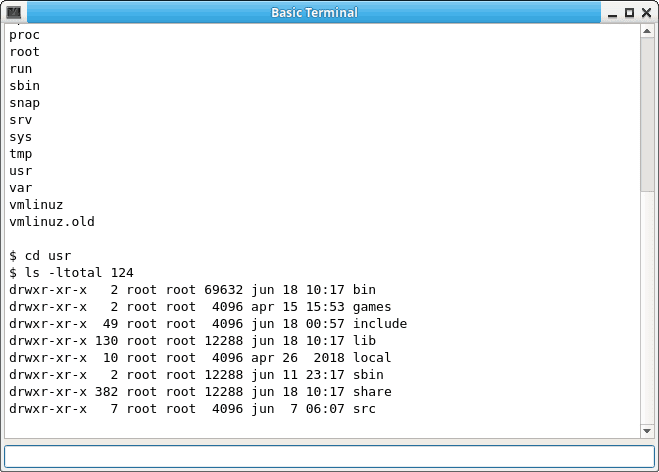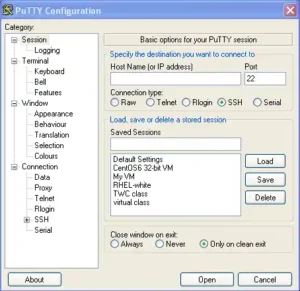Have you ever wondered how modern computing connects with the rich legacy of its past? Enter the world of terminal emulators – the bridge between the present and the era of mainframes and minicomputers. In essence, a terminal emulator is a software application that replicates the functionalities of traditional computer terminals, allowing you to interact with older, often more powerful systems from your personal computer. It’s like having a time machine at your fingertips, giving you the power to communicate with different systems from various eras. In this article, we’ll explore everything from the basics of terminal emulators to their advanced applications. We’ll also delve into how they’re still relevant in today’s tech landscape and why they’re an indispensable tool for professionals and enthusiasts alike. So, buckle up for a fascinating journey through the world of terminal emulation!
Table of Contents:
- What is a Terminal Emulator?
- Types of Terminal Emulators
- The Technical Mechanics of Terminal Emulators
- Terminal Emulators in Modern Computing
- Advanced Features and Customizations
- Comparison: Terminal Emulators vs Physical Terminals
- Best Terminal Emulators on the Market
- The Future of Terminal Emulation
- Conclusion
- References

1. What is a Terminal Emulator?
A terminal emulator is a nifty piece of software that transports us back to the days of bulky mainframes and streamlined minicomputers. In the early days of computing, terminals were the gateways through which users interacted with these powerful computers. However, as technology evolved, these physical terminals became obsolete, giving way to the personal computers we know today. This is where terminal emulators come in – they simulate those old-school terminals within modern computing environments, allowing us to communicate with different operating systems and access remote computers just like the original terminals did.
Historically, terminal emulators have roots in the 1970s and 80s, a time when computing was more centralized. The terminals were mere input/output devices with no processing power of their own, connected to a central mainframe. Terminal emulators preserve this functionality, encapsulating a rich history of computing in a software package.

Basic Functionalities and Purpose
The core functionality of a terminal emulator revolves around its ability to mimic the behavior of a traditional terminal. This includes:
- Command Line Interface (CLI): It provides a command-line interface where users can type commands, just like on old terminals.
- Remote Access: It enables access to a remote server or mainframe, allowing users to execute commands as if they were physically present at the machine.
- Compatibility: Terminal emulators are designed to be compatible with various protocols and systems, ensuring seamless communication across different computing environments.
The purpose of terminal emulators extends beyond mere nostalgia. They are essential tools in modern IT for tasks like server management, network configuration, and accessing command-line tools. They offer a bridge between the user-friendly graphical interfaces of today and the command-driven interfaces of the past.
2. Types of Terminal Emulators
Classification Based on Systems and Protocols
Terminal emulators can be classified based on the systems and protocols they support. Some are designed specifically for Unix or Linux environments, using protocols like SSH (Secure Shell) for secure communication. Others are tailored for Windows systems, offering emulation of DOS-based terminals or integrating with Windows-specific protocols.
- Unix/Linux Emulators: These often emulate terminals like xterm, gnome-terminal, or Konsole, focusing on Unix-like environments.
- Windows Emulators: Emulators like PuTTY or Windows Terminal provide functionalities tailored to Windows users, including support for command prompt and PowerShell.
Popular Terminal Emulators in Use Today
Several terminal emulators have gained popularity due to their features, user interface, and flexibility:
- PuTTY: A staple for Windows users, known for its SSH capabilities and simplicity.
- iTerm2 for macOS: Offers a plethora of features like split panes and search.
- GNOME Terminal: A favorite in the Linux world, known for its integration with the GNOME desktop environment.
- Hyper: Gaining traction for its customizability and extensibility, built on web technologies.
These emulators, among others, continue to be integral tools, facilitating a wide range of tasks from basic file operations to complex system administrations in diverse computing environments.
Synchronous and Asynchronous terminals
In asynchronous terminals, data can flow in any direction at any time. In synchronous terminals a protocol controls who may send data when. IBM 3270-based terminals used with IBM mainframe computers are an example of synchronous terminals. They operate in an essentially “screen-at-a-time” mode. Users can make several changes to a page before submitting the updated screen to the remote machine as a single action.
Terminal emulators that simulate the 3270 protocol are available for most operating systems, for use both by those administering systems such as the z9, as well as those using the corresponding applications such as CICS.
Other examples of synchronous terminals include the IBM 5250, ICL 7561, Honeywell Bull VIP7800 and Hewlett-Packard 700/92.
TIP
The emulation mode on the clients must match the terminal mode running on the back-end system in order for communication to work. If you are trying to connect to an unknown mainframe or other back-end system and your emulator cannot automatically detect the terminal mode needed, try using ANSI mode first. If that fails, try VT100 and other popular terminal modes.
3. The Technical Mechanics of Terminal Emulators
How Terminal Emulators Work
Imagine a terminal emulator as a translator, adeptly bridging the language gap between your modern computer and the ancient dialect of early mainframes. When you type a command into the emulator, it interprets and translates this input into a format compatible with the system you’re accessing. Whether it’s a Linux server, a Unix system, or even a Windows-based application, the emulator speaks their language fluently. It then displays the system’s response back to you in a comprehensible, user-friendly format. This process involves intricate emulation of network protocols, character encodings, and session management, ensuring that your modern device can ‘talk’ to older or remote systems without any hiccups.
Understanding the User Interface and Customization
The user interface of a terminal emulator is typically a window that resembles the look and feel of old-school terminals, but don’t let its simplicity fool you. Many emulators come loaded with a range of customization options. You can often change the font style, color schemes, and even the cursor appearance to suit your preferences. Advanced emulators allow you to open multiple tabs or windows, enabling simultaneous sessions on different servers. Customizable hotkeys and support for complex scripts further enrich the user experience, making terminal emulators not just functional, but also a joy to use.
4. Terminal Emulators in Modern Computing
The Role of Emulators in Contemporary IT Infrastructure
In the ever-evolving landscape of IT, terminal emulators are like Swiss Army knives – versatile and indispensable. They provide IT professionals with essential access to server environments, cloud services, and even networking equipment via command-line interfaces. In scenarios where graphical user interfaces (GUIs) are unavailable or impractical, terminal emulators step in to fill the gap, offering a level of control and precision that GUIs often can’t match. From routine file management and system updates to intricate network configurations and programming, these emulators are a backbone of modern IT operations.
Case Studies: Real-World Applications
- Financial Sector: A major bank uses terminal emulators to access and manage their transaction databases on legacy mainframe systems, ensuring seamless day-to-day operations.
- Telecommunications: Telecom giants rely on terminal emulators for configuring and maintaining their vast networks of routers and switches, often situated in remote locations.
- Education: Universities utilize terminal emulators to provide students and researchers with access to powerful Unix-based computing resources for complex data analysis and research.
- Healthcare: Hospitals use terminal emulators to securely access patient databases and critical applications running on various platforms, ensuring confidentiality and compliance with healthcare regulations.
In each of these cases, terminal emulators prove to be more than just tools – they are crucial enablers, keeping the wheels of industry, education, and healthcare turning smoothly in a digital world.
5. Advanced Features and Customizations
Exploring Advanced Settings and Options
Beyond the basics, terminal emulators offer a treasure trove of advanced features that can significantly enhance user experience and productivity. These include options like tabbed browsing, allowing users to manage multiple sessions in a single window. Split-screen functionality is another game-changer, enabling the side-by-side comparison of output from different sessions. For those who crave efficiency, key mapping and shortcut customization are invaluable, allowing quick execution of frequent commands.
Many emulators also support advanced text editing features like syntax highlighting, which is particularly helpful for coders and developers. Text search within the terminal, scrollback buffer adjustments, and session logging are other notable features that add layers of functionality, making terminal emulators not just tools, but powerful workstations.
Custom Scripts and Extensions
The real power of terminal emulators lies in their extensibility. Users can write custom scripts to automate routine tasks, saving time and reducing the potential for errors. These scripts can range from simple batch jobs to complex sequences that interact with multiple systems.
Extensions add another level of customization. Many modern emulators support add-ons that enhance functionality or integrate with other tools and platforms. For instance, you can find extensions for direct integration with version control systems like Git or deployment tools like Docker, streamlining the development and deployment processes.
6. Comparison: Terminal Emulators vs Physical Terminals
Advantages and Limitations of Emulators
Terminal emulators bring several advantages over their physical counterparts. The most obvious is convenience – emulators are software-based, meaning they’re more accessible and don’t require dedicated hardware. They’re also more versatile, often supporting multiple protocols and connection types in a single application.
However, emulators do have limitations. They rely on the underlying capabilities of the host system, meaning they may not perfectly replicate the experience of using a physical terminal in every scenario. Performance can also be an issue, particularly when dealing with high-latency networks or resource-intensive tasks.
The Transition from Physical to Virtual
The shift from physical terminals to terminal emulators mirrors the broader transition in computing from centralized to distributed systems. In the early days of computing, terminals were the only way to interact with powerful mainframe computers. As personal computers became more capable, the need for bulky, single-purpose terminals diminished.
Terminal emulators played a crucial role in this transition, offering a bridge between the old and new worlds of computing. They allowed users to continue interacting with legacy systems while taking advantage of the flexibility and power of modern PCs. This transition wasn’t just about replacing hardware with software; it was a significant step in the democratization of computing, making powerful computing resources more accessible to a broader audience.
7. Best Terminal Emulators on the Market
In the diverse landscape of terminal emulators, several standout options cater to different needs and preferences. Here’s a detailed look at some of the best terminal emulators available today, each with its unique set of features.

- PuTTY (Windows)
- Characteristics:
- Free and open-source terminal emulator.
- Supports various protocols including SSH, Telnet, and SCP.
- Simple user interface with comprehensive configuration options.
- Key generation utility for SSH authentication.
- Lacks built-in support for tabs but excels in stability and reliability.
- Characteristics:
- iTerm2 (macOS)
- Characteristics:
- Highly customizable with a focus on user experience.
- Supports split panes, allowing multiple terminal sessions in one window.
- Offers a deep set of features like search, autocomplete, and mouseless navigation.
- Integration with shell prompts for inline display of useful information.
- Comes with a GPU-based rendering engine for enhanced performance.
- Characteristics:
- GNOME Terminal (Linux)
- Characteristics:
- Default terminal emulator for GNOME desktop environment.
- Supports profiles for customizing appearance and behavior.
- Offers features like tabbed browsing, custom keybindings, and background transparency.
- Built-in support for internationalization and accessibility.
- Seamless integration with GNOME environment and applications.
- Characteristics:
- Hyper (Cross-platform)
- Characteristics:
- Built with web technologies (JavaScript, HTML, CSS).
- Fully extensible and customizable with plugins and themes.
- Real-time CSS styling of sessions.
- Supports tabs and split panes for multitasking.
- Ideal for users who prefer a modern, web-centric development environment.
- Characteristics:
- Windows Terminal (Windows)
- Characteristics:
- Modern terminal application for Windows.
- Supports Command Prompt, PowerShell, and WSL (Windows Subsystem for Linux).
- Tabbed interface for managing multiple sessions.
- Rich customization options including themes, fonts, and background images.
- GPU accelerated text rendering for smooth scrolling and display.
- Characteristics:
- Terminator (Linux)
- Characteristics:
- Focuses on arranging terminals in grids.
- Highly efficient for managing multiple sessions.
- Features include support for tabs, horizontal and vertical splitting.
- Customizable keybindings and layout saving.
- Suitable for power users who need to manage several open terminals simultaneously.
- Characteristics:
Each of these emulators excels in its way, offering unique features and capabilities. Whether you’re looking for something straightforward like PuTTY, something deeply integrated like GNOME Terminal, or something highly customizable like iTerm2 or Hyper, there’s an emulator out there to fit your workflow.
8. The Future of Terminal Emulation
Emerging Trends and Technologies
The field of terminal emulation is not just about preserving the past; it’s dynamically evolving with current tech trends. One significant trend is the integration of cloud-based technologies, allowing terminal emulators to access and manage cloud services efficiently. Another emerging area is the incorporation of AI and machine learning algorithms, potentially offering predictive typing, automated error correction, and intelligent command suggestions.
The rise of mobile computing is also influencing terminal emulators. Developers are working on responsive, touch-friendly emulators that can be effectively used on tablets and smartphones, ensuring that the power of terminal emulation is accessible anywhere.
Security, always a paramount concern in IT, is seeing advancements in terminal emulators with more robust encryption protocols and multi-factor authentication processes to safeguard against cybersecurity threats.
Predictions for the Next Generation of Emulators
Looking ahead, the next generation of terminal emulators is likely to be more integrated with other development tools, offering seamless transitions between coding, testing, and deployment environments. We can also expect a greater emphasis on user experience, with more intuitive interfaces and customization options tailored to individual workflow preferences.
Moreover, the advent of quantum computing might bring a new dimension to terminal emulators, requiring them to adapt to new computing paradigms and communication protocols.
9. Conclusion
We’ve journeyed through the world of terminal emulators, exploring their definition, history, types, and the nuances of their operation. From the basic functionalities to advanced customizations and real-world applications, it’s clear that terminal emulators are more than relics of computing history. They are vital tools that bridge past technologies with modern IT infrastructures.
The continuing relevance of terminal emulators lies in their adaptability, security, and efficiency. As long as there is a need to interact with various systems and perform complex tasks in IT, terminal emulators will remain an indispensable part of the tech toolkit. Their evolution, mirroring broader technological trends, ensures that they will continue to be relevant, useful, and powerful in the years to come.
10. References
- “The Art of Unix Programming” by Eric S. Raymond
- “UNIX and Linux System Administration Handbook” by Evi Nemeth, Garth Snyder, Trent R. Hein, and Ben Whaley
- “Linux Command Line and Shell Scripting Bible” by Richard Blum and Christine Bresnahan
- “Mastering the Linux Command Line” by Hybrid Tech
- Online resources and documentation from GNU Project, Linux Foundation, and Microsoft Docs